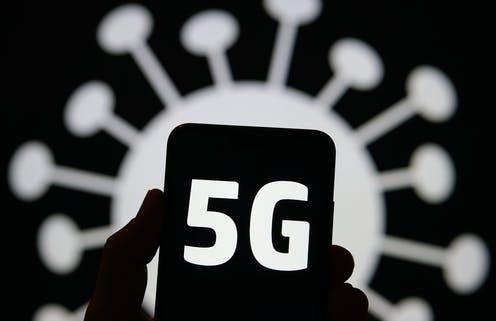At the recent AfricaCom event from November 9-12, part of the virtual Africa Tech Festival, Huawei held an online IP Gala conference with its industry partners to introduce the Key Architecture Index (KAI) and share its applications.
The theme of the conference was “Leading intelligent IP networks, accelerating intelligent connectivity”.
In the carrier environment, the IP network enables fixed-mobile convergence, network evolution and the shift towards multi-services and the cloud era.
At the moment, a challenge facing most IP (internet protocol) networks is unnecessary complexity, due to a lack of IP architecture standardisation. Most networks were built without adequate foresight, and next-generation networks, be they 3G, 4G or 5G, were built on top of existing networks.
This created network complexities around lack of visibility, management and control.
“We have to forever simplify our networks while moving to intelligent self-driving autonomous networks,” said Samuel Chen, Director of Huawei Southern Africa Marketing & Solution Sales Department at the conference.
KAI architecture specifically addresses complexity challenges, enabling future-ready networks with easy integration, visibility, management and control, by measuring five dimensions of the transport network.
The KAI model indexes are Congestion Free, Scalability, Simplification, Always-on and Intelligence. Each dimension is evaluated across the optical, IP and the manager/controller/analyzer layer.
“The KAI model helps measure the results at an acceptable level across all of our offering portfolio so that we can realise a cloud-native based approach to monitoring the architecture,” said Hugh Ujhazy, Vice President, IOT & Telecom at IDC.
Zoltan Miklos, General Manager of Network Planning at MTN South Africa delivered a presentation at the conference outlining the Best Experience Congestion-Free IP Transmission Network, which would be the direct result of following an architectural model.
He emphasised that it was critical to building networks with customer experience in mind.
“User experience is not only related to the wireless network, but to all aspects that form part of the service chain – from the customer to the core of the network,” he said.
Miklos said MTN was working hard to improve network architecture and was achieving excellent packet-loss rates of less than 10-4 across its entire network. The continuous P3 best-in-test achievements MTN has obtained were testimony to this," he said.
A white paper titled Transport Network Architecture Index in 5G and Cloud Era published by industrial intelligence company IDC this year has encouraged many operators across the world to move their network towards the KAI index model, looking to future-proof their network architecture.
Tony Hu, Huawei vice president of Data Communication Product Line said that a step-by-step approach was the right way for customers to embrace this evolution onto the KAI architectural model.
“We need to think not just as box layers. We need to think about the system layers, the architecture layers,” said Hu. “We need to rethink how services will be running on future IP networks and how to evolve our current networks for the future.”
He said IP networks could evolve by evaluating the current network against the five KAI dimensions. The KAI score obtained could then help the carrier to define the target network and the necessary corrective steps to be taken to get there.
The KAI model measures a network’s five dimension as follows:
Congestion Free: Fiberization Ratio, 10G/25G to Site, Convergence Ratio, Network Slicing.
Simplified: SRv6/EVPN, Precise Clock Sync (G.8275.1).
Scalable: IP Capacity, Fixed + Mobile + Enterprise Network Convergence, Control & User Plane Separation (BNG).
Always On: Topology – Ring & Mesh, Network & Service Decoupling, Protection – IP FRR/TI-LFA, IP + Optical Synergy.
Intelligent: Auto Provisioning, Visualization on GIS & Logical Topology, Trouble Recovery(mins level), Predictive & Proactive Maintenance , Full Stack AI.
Ujhazy said inadequate levels of coverage or performance led customers to change providers.
By contrast, network excellence led to improved customer experience, which would then enhance the provider’s success in the market.
“In recent years, the transport network has become the deciding factor in the quality of customer experience,” he concluded.
Latest Stories
-
Kevin Taylor’s court appearance without arrest proof of judicial abuse under NDC – NPP MP
12 minutes -
The inconvenient truth: Why Africa’s boardrooms must reset the boardroom governance clock
52 minutes -
Abuakwa South MP issues appeal for 21st-century overhaul of education system
1 hour -
PURC reports consumer grievances and monitoring efforts in Northern Region
1 hour -
Barcelona B extend Abdul Aziz Issah’s loan for 2025/2026 Season
2 hours -
Black Sabbath singer Ozzy Osbourne dies at 76, Sky News reports
2 hours -
Forestry Commission responds to Sokoban wood sellers’ harassment claims
2 hours -
Government urges legal counsels to accelerate resolution of Chieftaincy disputes
2 hours -
Education: GQAA calls for an end to punishing students for using AI
2 hours -
Unlike NPP, the NDC gov’t is taking heed of my reports on galamsey though the menace continues – Erastus Asare Donkor
2 hours -
AT CEO urges students to embrace AI at TEDxUCC Career and Skill Summit
2 hours -
Anlo Youth Council welcomes Blekusu Sea Defence Phase II but warns of looming danger on unprotected coastal stretch
2 hours -
School under siege – Why cybersecurity must be a top priority in Ghanaian classrooms
2 hours -
Police arrest Nigerian suspect in armed robbery attack at Avenor
2 hours -
Volta NDC Chair: Mahama’s fast-track projects signal real change for the region
2 hours

